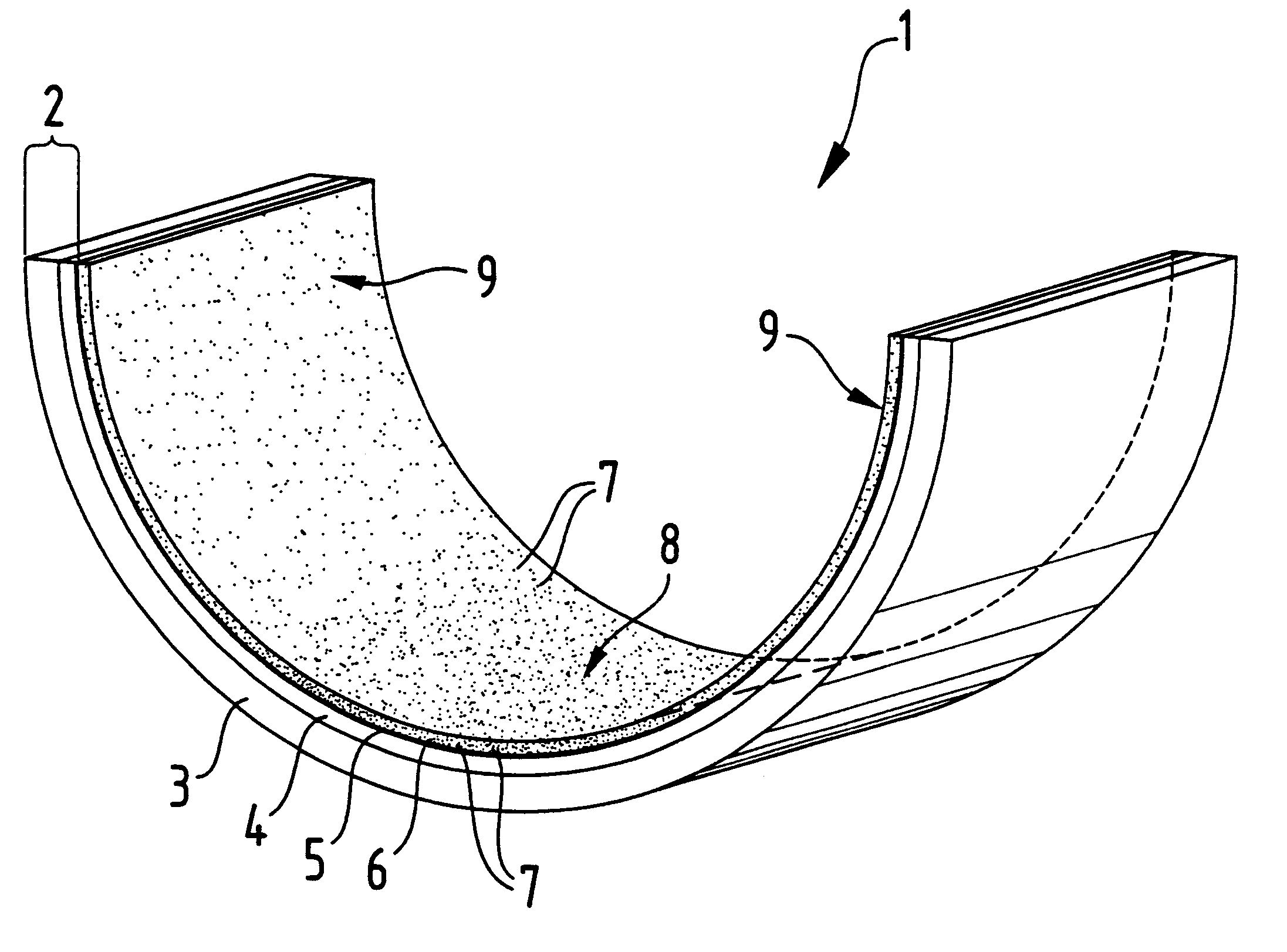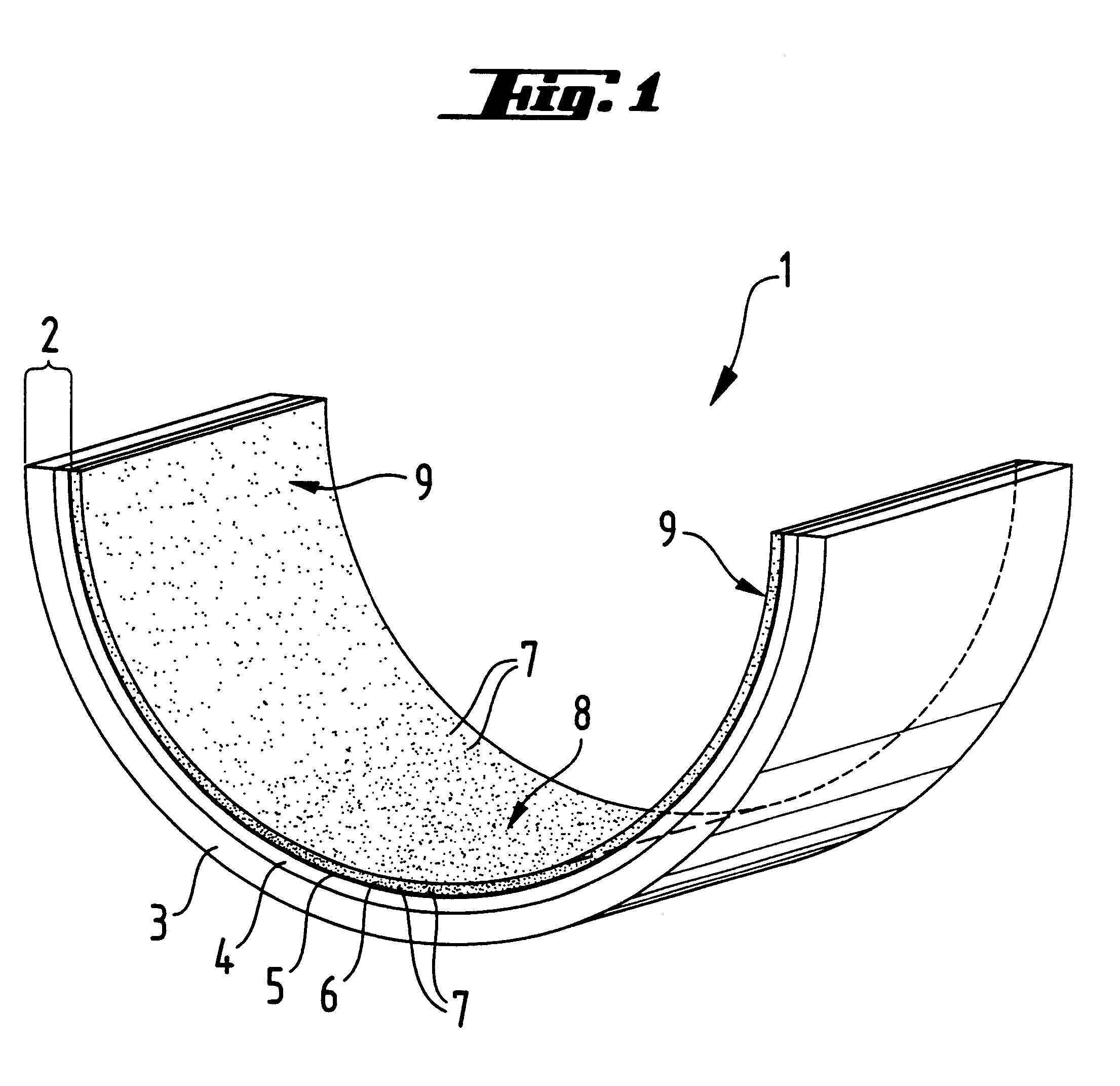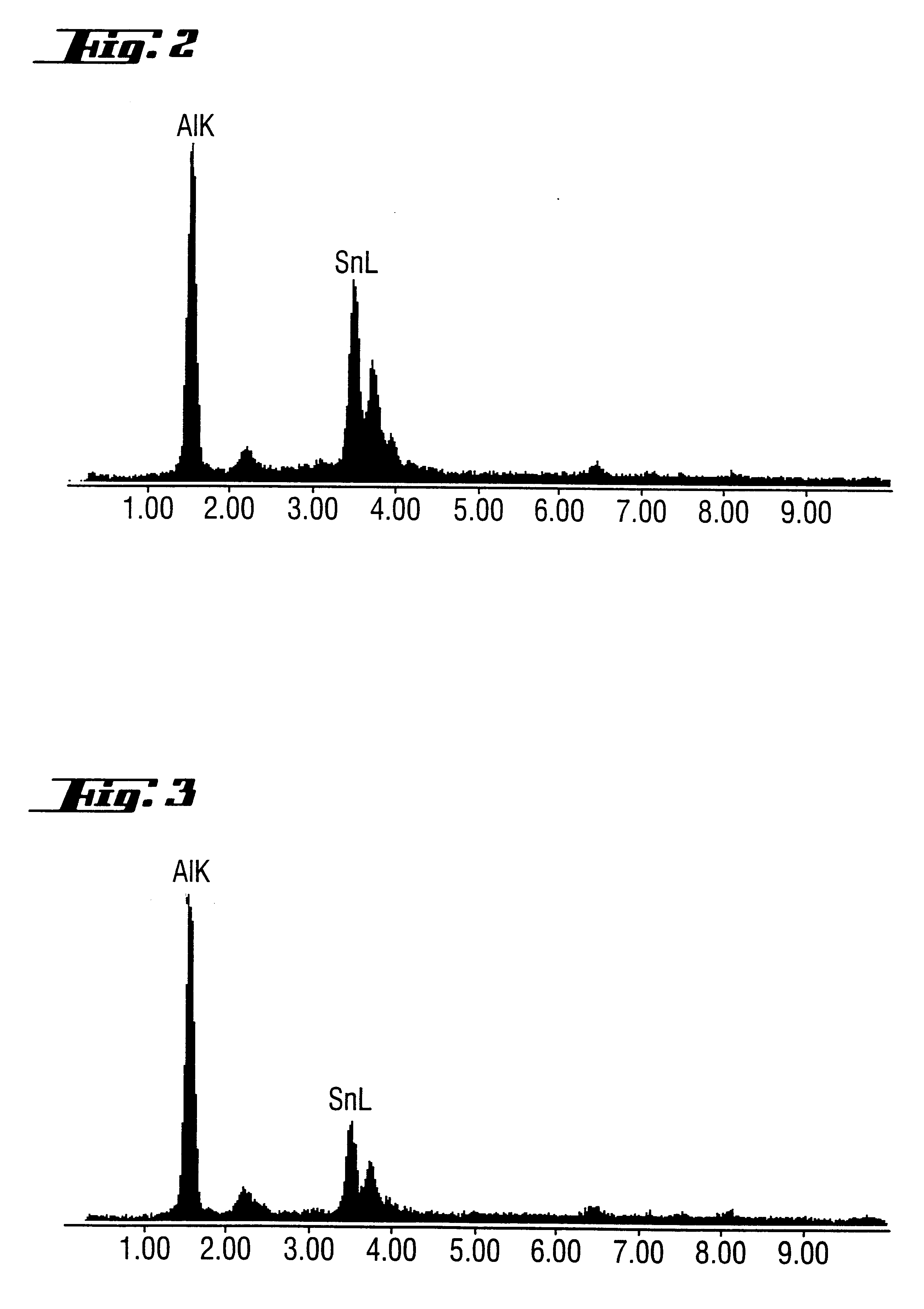Half bearing and method for the production thereof
a technology of half bearings and half bars, applied in the direction of bearings, ion implantation coatings, chemical vapor deposition coatings, etc., can solve the problems of pb or sn, often inadequate corrosion resistance of electroplating layers, etc., and achieve high limit loads and good emergency running and running behavior
- Summary
- Abstract
- Description
- Claims
- Application Information
AI Technical Summary
Benefits of technology
Problems solved by technology
Method used
Image
Examples
Embodiment Construction
FIG. 1 shows a half bearing 1 having a backing member 2 and an overlay 6. The backing member 2 consists of a steel supporting shell 3, onto which a CuPbSn alloy 4 has been applied by a casting or sintering process together with a diffusion barrier layer 5. The carbon content of the steel is between 0.03% and 0.3%.
After various annealing and forming processes known per se, half bearings are produced from a strip by pressing strip pieces of a specific length. After surface machining of these bearings by drilling or rolling, the bearing shells are provided with a diffusion barrier layer 5 of nickel or a nickel alloy by an electroplating or a PVD process. The backing member is then degreased and introduced into a vacuum evaporation installation. Further surface cleaning or activation is effected therein by a sputtering and etching process.
After evacuation of the coating chamber, the latter is flooded with argon, the pressure being set at approximately 1 Pa. The backing member 2 is then ...
PUM
| Property | Measurement | Unit |
|---|---|---|
| Pressure | aaaaa | aaaaa |
| Pressure | aaaaa | aaaaa |
| Pressure | aaaaa | aaaaa |
Abstract
Description
Claims
Application Information
 Login to View More
Login to View More - R&D
- Intellectual Property
- Life Sciences
- Materials
- Tech Scout
- Unparalleled Data Quality
- Higher Quality Content
- 60% Fewer Hallucinations
Browse by: Latest US Patents, China's latest patents, Technical Efficacy Thesaurus, Application Domain, Technology Topic, Popular Technical Reports.
© 2025 PatSnap. All rights reserved.Legal|Privacy policy|Modern Slavery Act Transparency Statement|Sitemap|About US| Contact US: help@patsnap.com



